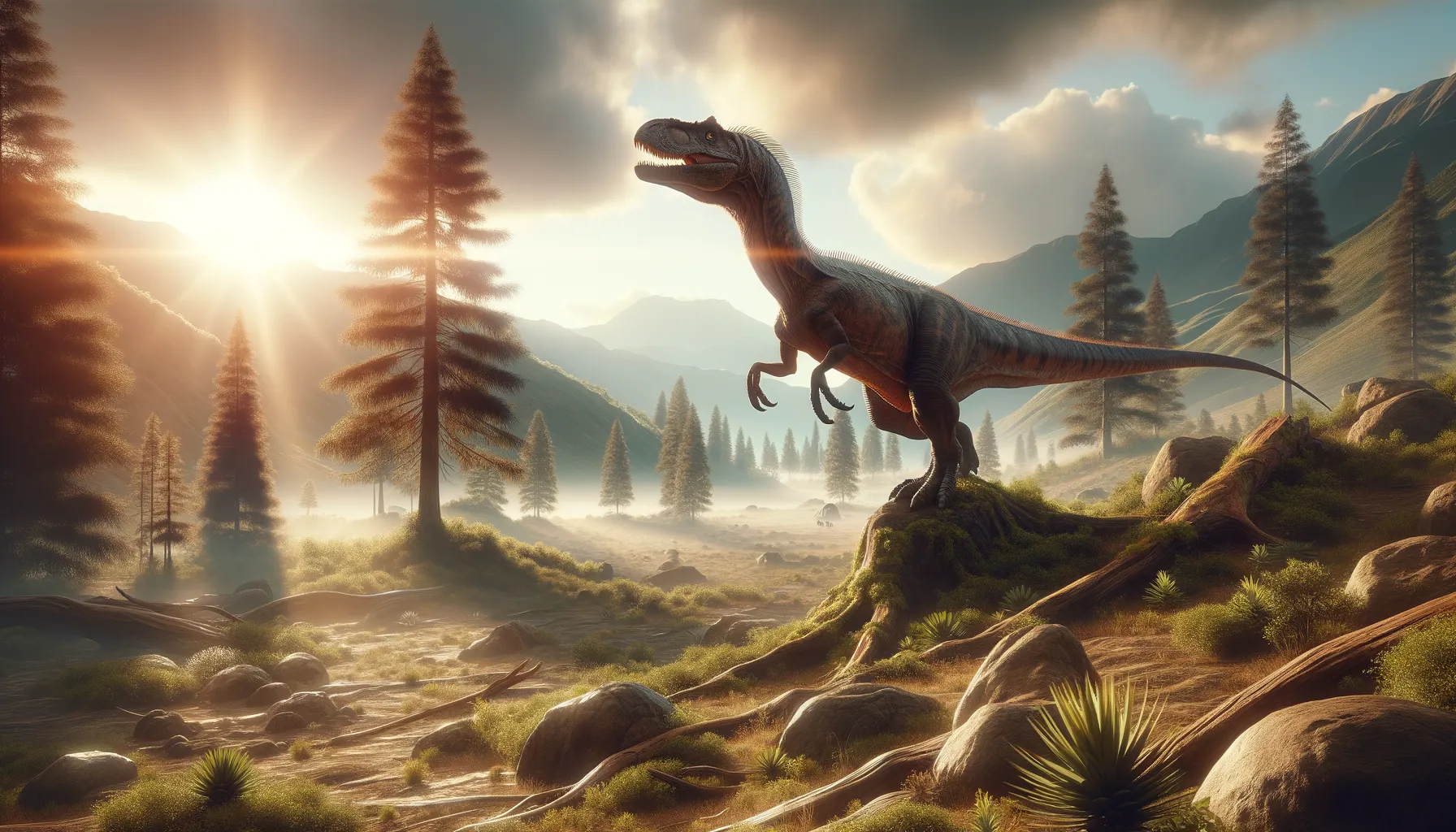
Neimongosaurus
Gentle giant of Cretaceous greenery!
Period
Cretaceous
Length
About 5 meters long.
Height
Approximately 3 meters tall.
Weight
Around 1 ton.
Neimongosaurus was a medium-sized herbivorous therizinosaur known for its distinctive claws and long neck. Belonging to the late Cretaceous period, it roamed regions that are now part of Inner Mongolia, China. With adaptations suited to a plant-based diet, this dinosaur's structure provides insights into its lifestyle and the diverse evolutionary pathways of therizinosaurs.
Diet
Neimongosaurus was primarily herbivorous, relying on a diet of leaves, ferns, and other plant materials. Its long neck allowed it to forage effectively in diverse vegetation, reaching both high and low foliage.
Hunting
As a herbivore, Neimongosaurus did not hunt for prey. Instead, it would have spent its time foraging for food, using its claws to pull branches closer if necessary.
Environmental challenges
Neimongosaurus faced challenges such as varying climate conditions, which could include changes in temperature and rainfall affecting plant growth. Predation from carnivorous dinosaurs would have been a threat, necessitating the need for defensive strategies or herd behavior. Competition for food resources with other herbivores could also dictate its movement and feeding habits.
Speed
Relatively slow-moving.
Lifespan
Estimated to live several decades.
First discovery
Discovered in Inner Mongolia, China in 2001.
Fun Facts
- Neimongosaurus was a feathered therizinosaur that lived about 90 million years ago during the Late Cretaceous period.
- Its name, Neimongosaurus, means 'inner Mongolia lizard,' named after the region where it was discovered in China.
- Unlike the fierce carnivores that dominated its time, Neimongosaurus was likely an herbivore, using its long claws to pull down leaves for feeding.
- This dinosaur had a small head but a long neck, which helped it reach vegetation more effectively.
- Neimongosaurus is part of the therizinosaur family, a unique group known for their distinctive clawed hands and unusual appearance.
- The discovery of Neimongosaurus fossils has given scientists valuable insights into the diversity of feathered dinosaurs.
- Its body structure suggests it walked on two legs but could also move on all fours when foraging.
Growth and Development
Neimongosaurus, like many dinosaurs, likely had a rapid growth rate during its early years to quickly reach a size that reduced predation risk. Its development would be closely tied to the availability of food resources, impacting its maturation speed. As it grew, it would have developed the distinctive features such as its long neck and claws that characterized adult specimens.
Habitat
Neimongosaurus inhabited areas with lush vegetation, providing it with ample food supply. It likely preferred environments with dense foliage where it could use its adaptations to feed efficiently. Seasonal changes in its habitat may have influenced its migratory patterns, seeking regions with optimal feeding conditions throughout the year.
Interaction with other species
Neimongosaurus likely coexisted with a variety of other dinosaur species, both herbivores and carnivores. This coexistence would have necessitated strategies for avoiding predators or competing for food. It may also have engaged in symbiotic relationships with other species, indirectly benefiting from their presence or actions.
Natural lifespan
Neimongosaurus likely had a natural lifespan spanning several decades.
Reproduction
Neimongosaurus likely engaged in nesting behavior, laying eggs in carefully chosen or constructed nests. Parental care could have been a part of its reproductive strategy, increasing the survival rates of its young by protecting them from predators.
Social behaviour
Neimongosaurus may have exhibited some degree of social behavior, possibly moving in groups for protection against predators. This social structure could help with foraging efficiency and safeguarding the young within the group.
Fossil locations
Fossils of Neimongosaurus have been primarily found in Inner Mongolia, China, providing valuable insights into the region's biodiversity during the late Cretaceous period.
